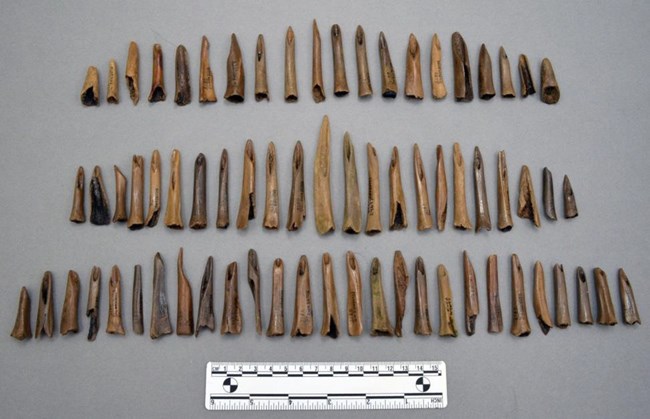
NPS Photo
How were they made?
The Anhinga Trail collection contains 96 socketed bone and antler points. The points are called socketed points because the hollow bottom of the point fits over a wooden shaft. Many of these points were made from raccoon bone. Others were made from birds, deer antler, bobcats, opossums, and skunks.
Some socketed bone points were made using shark teeth tools. Others appear to be made using stone tools. Native Americans fashioned these points by first making a horizontal cut at the widest part of the bone to make the base (flat end). Then they made the tip (pointed end) by repeatedly passing a sharp, pointed tool over two surfaces of the bone in a diagonal direction.
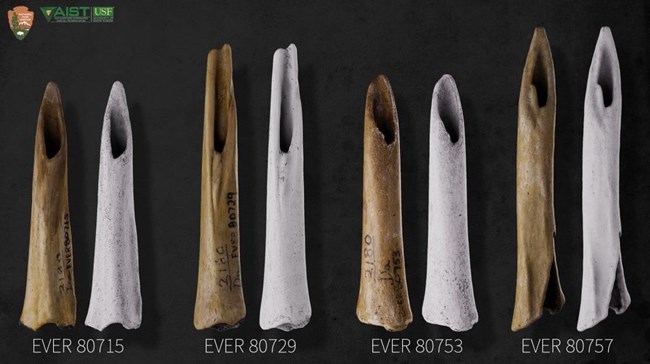
NPS Photo
How were they used?
Native Americans used these points to hunt animals living in and around Taylor Slough. The point was attached to a wooden shaft and used as a spear or dart. Breaks on the artifacts suggest that these socketed bone points were lost in the water during hunting and fishing activities.
Most of the socketed points have wear and damage from use. Archeologists call this usewear. Patterns in usewear are helpful for determining how these points were used.
Reflectance transformation imaging (RTI) makes it easier to see usewear by allowing archeologists to manipulate the angle of light on the object to make marks on the surface more visible. The usewear observed on several of the socketed points indicate that the points were thrust against something, suggesting they were used as spears or darts for hunting.
Socketed points have been found infrequently at other archeological sites in the Everglades area. Socketed points have also been found at archeological sites outside of Florida and even in other countries.
Anhinga Trail Collections
-
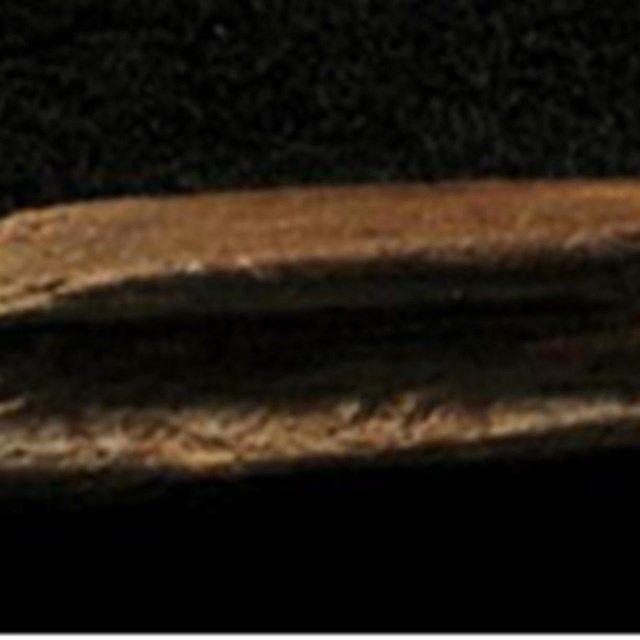 Fish Hooks, Gorges, and Leister
Fish Hooks, Gorges, and LeisterFish could be caught individually with hooks, gorges, and spears or could be caught in groups using nets or fish weirs.
-
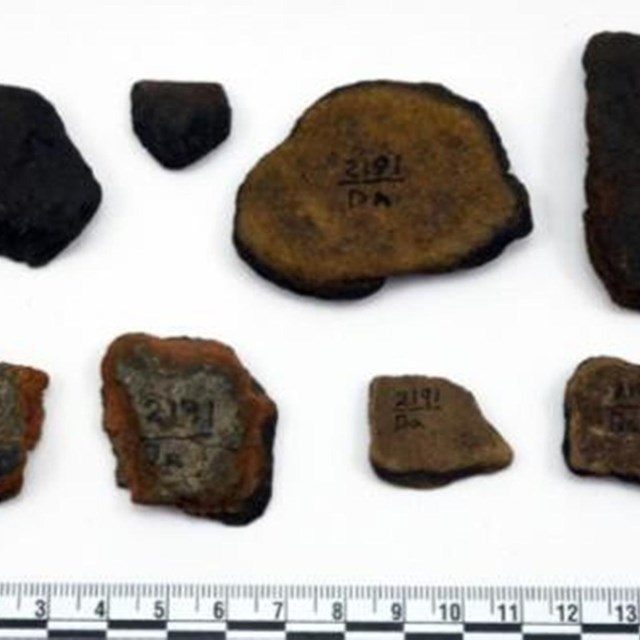 Ceramics
CeramicsAt many archeological sites ceramics are the most common artifact found.
-
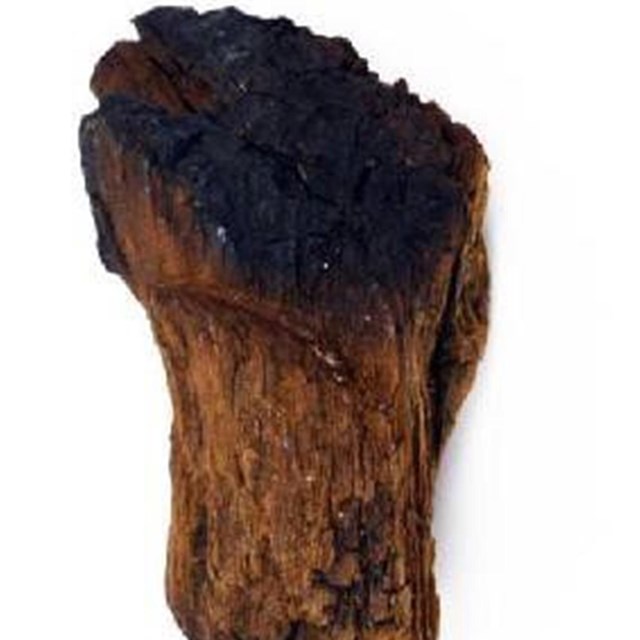 Wood Objects
Wood ObjectsArtifacts made from wood often decay long before archeologists excavate sites.
Last updated: July 16, 2024
